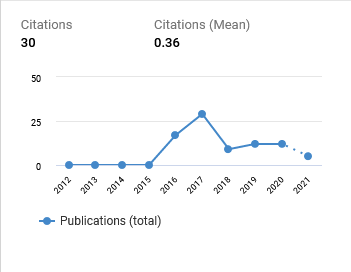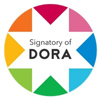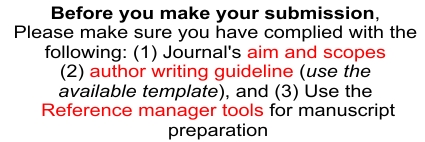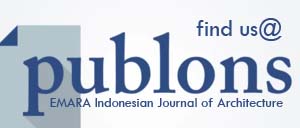Tectonics of Lumbung (Landa') Duri Traditional House in Enrekang Regency
DOI:
https://doi.org/10.29080/eija.v7i2.1197Keywords:
Landa, , Barn,, structure,, comstruction,, reinforcement,, Kale Landa,, Dea Landa,Abstract
Landa 'is the name for the granary of the Duri Tribe, which is different from the barns in the archipelago and is full of architectural metaphysical values. Landa's existence in Enrekang District was founded in three villages, one of which is Kendenan Village, which is the location of the study because the most significant number of Landa is in this village. The community still holds the traditions inherited from their ancestors. This research aims to uncover and discover the characteristics of the structure and construction of the terrace'. The research method used a qualitative approach with descriptive analysis techniques. The research results reveal that vertically the Landa 'is divided into three main parts. the first leg/bottom (Bala Landa') uses the column frame structure system, and the construction uses the fulcrum and perforation system; the second part is the body/middle (Kale Landa). ) which uses a siamma structure and construction system, and the third part of the head/top (Dea Landa ') uses a beam frame and a construction system using a stack, notch, and perforation system. Knowledge and the design process of Landa 'are full of local wisdom values responsive to disasters.
Downloads
References
Antariksa. (2017). Teori & metode pelestarian arsitektur & lingkungan binaan. Cahaya Atma Pustaka. https://opac.perpusnas.go.id/DetailOpac.aspx?id=1033637
As, Z. (2015). Kecenderungan wujud arsitektur tradisional duri terhadap arsitektur tradisional bugis dan toraja di kabupaten enrekang. Teknosains: Media Informasi Sains dan Teknologi, 9(2), 236–246. https://doi.org/10.24252/teknosains.v9i2.1870
Krier, R. (1996). Komposisi Arsitektur Ed. 1. Erlangga.
Oktavia, A. M., & Prihatmaji, Y. P. (2019). Tektonika rumah gadang sebagai bentuk struktur konstruksi yang ramah gempa. SENADA (Seminar Nasional Manajemen, Desain Dan Aplikasi Bisnis Teknologi), 2, 655–663. https://eprosiding.idbbali.ac.id/index.php/senada/article/view/113
Oktawati, A. E., & Sahabuddin, W. (2017). Karakter Tektonika Rumah Tongkonan Toraja. Kebanggan Arsitektur Nusantara, 172. http://repositori.uin-alauddin.ac.id/9355/
Rahmani, A. I., & Karim, A. (2020). Tematisasi Desain: Studi Behavior Setting Pengguna terhadap Tema Ruang Perpustakaan. Jurnal Desain, 8(1), 27–39. https://doi.org/10.30998/jd.v8i1.7588
Sato, K. (2014). Menghuni Lumbung: Beberapa Pertimbangan Mengenai Asal-Usul Konstruksi Rumah Panggung di Kepulauan Pasifik. Antropologi Indonesia. https://doi.org/10.7454/ai.v0i49.3291 DOI: https://doi.org/10.7454/ai.v0i49.3291
Sir, M. M. (2015). Pengetahuan Tektonika Arsitektur Tongkonan. Posiding Seminar Nasional Dan Loka Karya Nasonal Pemahaman Sejarah Arsitektur (LPNSA). Seminar Nasional dan Lokakarya Nasional Pemahaman Sejarah Arsitektur (LNPSA) XI. https://eng.unhas.ac.id/arsitektur/files/588d11549d286.pdf
Siwalatri, N., & Ketut, A. (2016). Tektonika Arsitektur Bali. 383–394

Downloads
Additional Files
Published
How to Cite
Issue
Section
Categories
License
Copyright (c) 2022 Zulkarnain AS, Ibrahim Rahmani Ahmad

This work is licensed under a Creative Commons Attribution-ShareAlike 4.0 International License.
- Authors retain copyright and grant the journal right of first publication with the work simultaneously licensed under a Creative Commons Attribution ShareAlike License that allows others to share the work with an acknowledgment of the work's authorship and initial publication in this journal.
- Authors are able to enter into separate, additional contractual arrangements for the non-exclusive distribution of the journal's published version of the work (e.g., post it to an institutional repository or publish it in a book), with an acknowledgment of its initial publication in this journal.
- Authors are permitted and encouraged to post their work online (e.g., in institutional repositories, pre-print sites, or on their website) prior to and during the submission process, as it can lead to productive exchanges, as well as earlier and greater dissemination of published work.
































